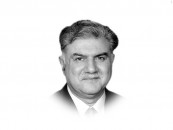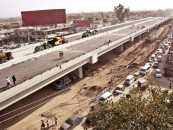Afghanistan: Drawdown and beyond
United States neither has the will nor the resources to stay its course in Afghanistan.

During his West Point discourse in December 2009, Obama had set three objectives for the surge: Denying al Qaeda safe havens; reversing the Taliban’s momentum; and training Afghan national security forces to take over security responsibility. Unfortunately, none of these objectives has been achieved.
President Obama was misled by his generals into an escalation that he supported only conditionally. He has now taken back control of his war policy in Afghanistan. However, commencement of a drawdown is not the end of war. Combative operations will continue, though with a change of format. Aerial attacks and Special Forces Operations will become the mainstay of military effort. Isaf/Nato troops are poised to continue their presence in Afghanistan, and America is arm-twisting the Karzai government for allowing it six to eight permanent military bases in Afghanistan.
Obama’s core goal — that “no safe haven from which al Qaeda or its affiliates can launch attacks against our homeland or our allies” — will translate into more pressure for Pakistan to act against the Haqqani network and other groups in North Waziristan.
The announcement of the drawdown without achieving the stated objectives is a tacit admission of America’s eroding staying power. The United States neither has the will nor the resources to stay its course in Afghanistan. That is why the drawdown schedule is without any reference to conditions on the ground.
Though Republicans call Obama a declinist, there is ample evidence of his intrinsic pragmatism. He considered the implications of a rising debt, a restless public, mounting death toll and, above all, an overly projected threat. Moreover, Obama understands that embracing failure gracefully is a better option than a strategic meltdown.
Now Obama’s test lies in cobbling together a political settlement in Afghanistan; a task easier said than done. It is indeed a huge diplomatic enterprise involving multi-tiered intra-Afghan and intra-region interactions. All countries which share borders with Afghanistan need to be on board.
On the heels of Obama’s unveiling of the drawdown plan, Hillary Clinton described the US-Pakistan relationship as frustrating.
At a bilateral plane, Pakistan and the United States are at crossroads. They need to redefine the parameters of their relationship. This relationship has degenerated into a transactional linkage; it needs to be resurrected into a mutually beneficial partnership where America learns to respect Pakistan’s sensitivities. Only a joint effort by the US and Pakistan holds the key to a sustainable solution to the Afghan conflict.
Published in The Express Tribune, June 29th, 2011.














COMMENTS
Comments are moderated and generally will be posted if they are on-topic and not abusive.
For more information, please see our Comments FAQ